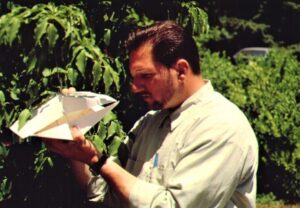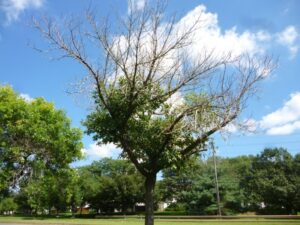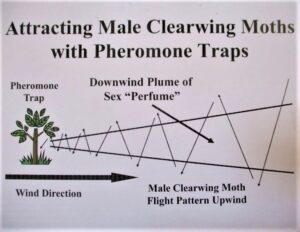During soil testing season, we often get calls about what laboratory to send samples to and what to test for. You may not know that under certain circumstances USDA-APHIS may have a quarantine for a particular plant or animal pest that can be carried in soil, and movement of soil from that region is restricted and requires a permit. This includes all territories of the United States such as Guam, Hawaii, Puerto Rico, and the U.S. Virgin Islands. APHIS also restricts the movement of domestic soil from areas within the continental United States that are under quarantine for specific plant pests and adjoining countries. For example, currently soil cannot enter the U.S. from Canada if from the following areas of Alberta: A farm unit and associated land located near the municipality of Fort Saskatchewan; and a farm unit and associated land located near the municipality of Spruce Grove; British Colombia: That portion of the municipality of Central Saanich on Vancouver Island, ease of the west Saanich Road; Newfoundland and Labrador: The entire Island of Newfoundland; and Quebec: The municipality of Saint- Amble.
The Federal Domestic Soil Quarantines Map provides an overview of the plant pest quarantines that affect the movement of soil. USDA recently updated their Federal Domestic Soil Quarantine Map on February 10, 2022 which is available as a pdf at:
This map contains a lot of information that is useful for producers, growers and consumers who are purchasing plant materials that may contain soil to be mindful of the presence of significant plant pests of concern that have not yet made it to New Jersey, and to do their part to not bring them here. While many are limited to infestations along the west coast and gulf coast, others are closer to home. For example, the golden nematode is a potato nematode that is quarantined in some parts of western New York State. The pale cyst nematode is another potato nematode of concern that is quarantined from a small area of Idaho and the island of Newfoundland, Canada.
Others like the imported fire ant continue to spread and are now found in hot spots in Alabama, Arkansas, California, Florida, Georgia, Louisiana, Mississippi, New Mexico, North Carolina, Oklahoma, South Carolina, Tennessee, Texas, Virginia, and Puerto Rico. Quarantine efforts thus far have been able to limit the spread of witchweed to locations in South and North Carolina.
- Various Fruit Flies https://www.aphis.usda.gov/aphis/ourfocus/planthealth/plant-pest-and-disease-programs/pests-and-diseases/fruit-flies/fruit-flies-home
- Golden Nematode https://www.aphis.usda.gov/aphis/ourfocus/planthealth/plant-pest-and-disease-programs/pests-and-diseases/golden-nematode/nematodes
- Imported Fire Ant https://www.aphis.usda.gov/aphis/ourfocus/planthealth/plant-pest-and-disease-programs/pests-and-diseases/imported-fire-ants/ct_imported_fire_ants
- Pale Cyst Nematode https://www.aphis.usda.gov/aphis/ourfocus/planthealth/plant-pest-and-disease-programs/pests-and-diseases/nematode/pcn
- Phytophthora ramorum (Sudden Oak Death pathogen) https://www.aphis.usda.gov/aphis/ourfocus/planthealth/plant-pest-and-disease-programs/pests-and-diseases/phytophthora-ramorum/sod
- Witchweed https://www.aphis.usda.gov/plant_health/plant_pest_info/weeds/downloads/witchweed-sites-map.pdf
If you have specific questions about bringing in soil from any of these areas denoted in this USDA soil quarantine map or about these quarantine pests, contact the USDA-APHIS NJ state office, state plant health director at (609) 259-5244 or for more contact information see https://www.aphis.usda.gov/aphis/ourfocus/planthealth/ppq-program-overview/sphd/new+jersey




